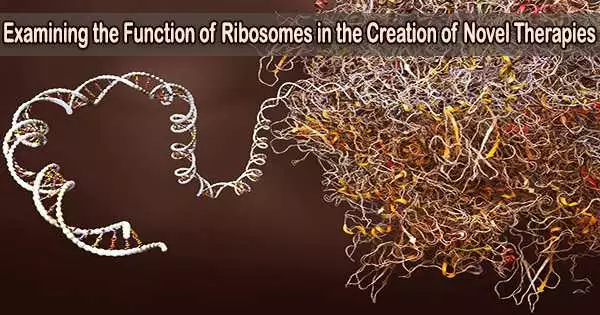There are billions of cells in the human body, and each cell uses 60% of its energy to run a particular molecular machine. That device is in charge of generating proteins, which are essential structural components of the body.
The ribosome is the name of the molecular device. A copy of the genetic code found in the genome, known as mRNA, is the basis for the ribosome’s function, which is to produce proteins. Until recently, scientists thought that the ribosome handled all mRNA in a similar manner, much like a standardized assembly line that it did not control on its own.
However, researchers from the University of Copenhagen have discovered that this is not the case.
“It has long been known that there are different types of ribosomes. But it has been assumed that no matter what mRNA you give the ribosome, it will produce a protein. But our results suggest that different types of ribosomes produce specific proteins,” says Anders H. Lund, Professor at the Biotech Research and Innovation Centre at the University of Copenhagen.
Anders H. Lund and his colleagues found that cancer cells have different ribosomes compared to other cells, and that was the basis for the new discovery. Their paper is published in the journal Developmental Cell.
“This led us to speculate why this is the case. Perhaps cancer cells need specific proteins to grow, form metastases, or undergo other types of development? This made us consider why various types of ribosomes exist and how they are vital for the body’s development,” says Anders H. Lund.
Our results suggest that we may be able to control this process better because we now know more about what regulates the production of specific proteins. It may also shed light on the biological processes that are crucial for the development of specific cell types. This knowledge could potentially be used in regenerative medicine.
Professor Anders H. Lund
The study, conducted in collaboration with adjunct Sophia Häfner as the first author, was carried out in both mouse brains and human stem cells. According to Anders H. Lund, this provides a strong indication that the results are applicable to many forms of life.
A small change with significant implications
The scientists started by looking at mouse brains from the fetal stage and on. They discovered that the ribosomes in the developing brain changed, indicating that ribosomal alterations are essential for normal development.
To investigate whether the same applies to humans, the researchers used human stem cells, which can differentiate into many different cell types found in the human body.
“We induced the cells to differentiate into various cell types and tracked them during development. We then examined whether the ribosomes had changed, and indeed, we observed that they did,” says Anders H. Lund.
Ribosomes have a specific pattern with 114 small chemical modifications. The researchers hypothesize that these changes, which alter during cell differentiation, could function as a code to control which proteins the ribosome generates.
“If we remove a single modification and differentiate stem cells into nerve cells, the ribosome will produce different types of nerve cells than usual. Thus, the appearance of the ribosome is essential for what the cells can become over time,” says Anders H. Lund.
“In this way, we demonstrated that the ribosome is not just a passive ‘translator’ of mRNA into protein but rather has an active, regulatory function.”
Improved treatments in the future
There is currently a lot of study being done on stem cells with an emphasis on how to develop particular cell types, including nerve cells. Therefore, this new information is crucial for comprehending how the body’s cells grow. Additionally, it might make it possible for us to create better medicines in the future.
“Our results suggest that we may be able to control this process better because we now know more about what regulates the production of specific proteins. It may also shed light on the biological processes that are crucial for the development of specific cell types. This knowledge could potentially be used in regenerative medicine,” says Anders H. Lund.
In regenerative medicine, patients receive therapies in which healthy cells are implanted to help the body operate normally once more. It can be applied to treat conditions like Parkinson’s disease or diabetes.
In the future, these findings may also lead to better treatments for cancer.
“It all started when we observed that ribosomes looked different in cancer cells compared to healthy cells. When ribosomes are different, we may be able to develop a substance that can bind to and possibly inhibit, or paralyze, some of the ribosomes that are abundant in cancer cells. This could offer new treatment possibilities,” says Anders H. Lund.
















